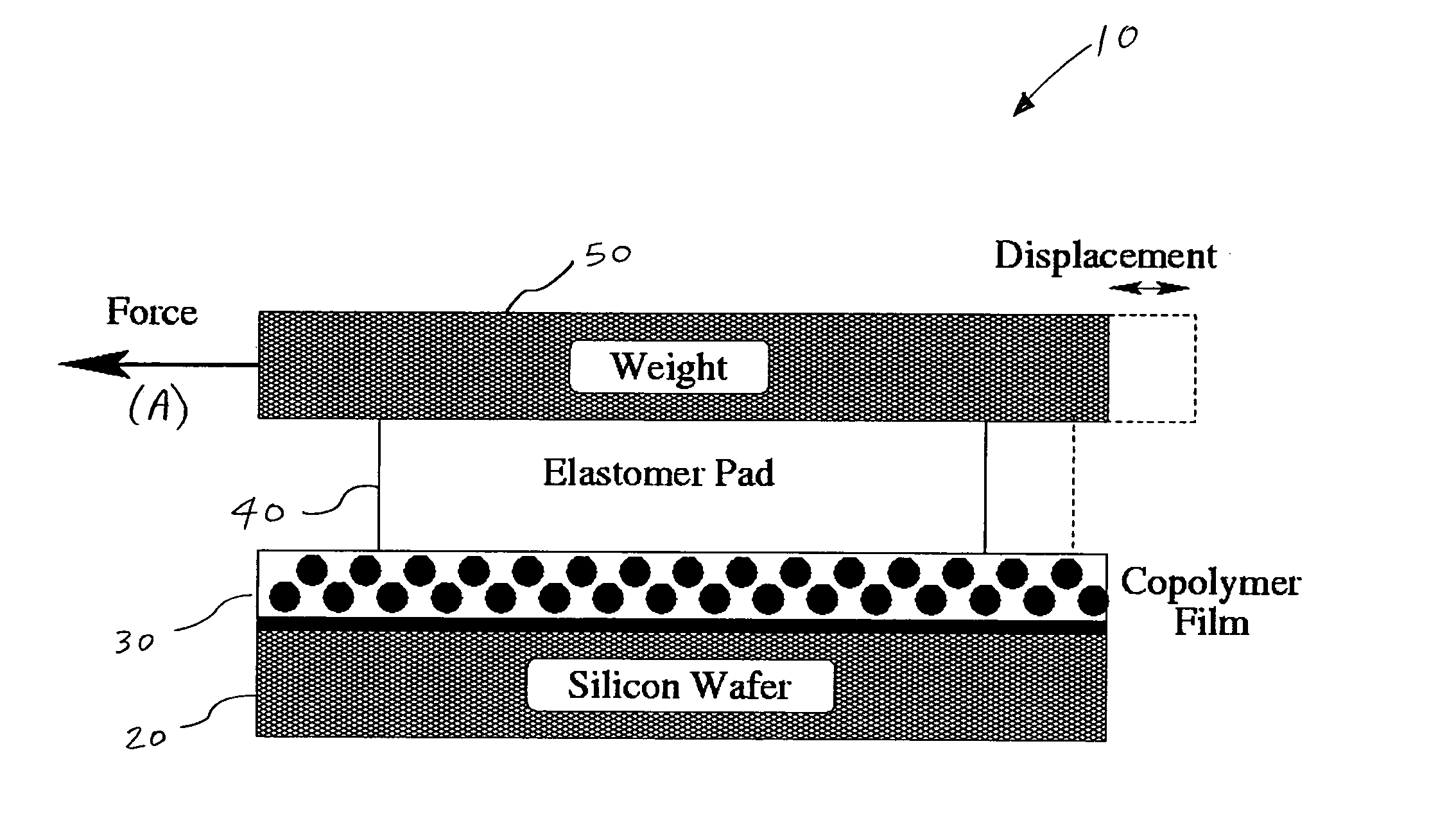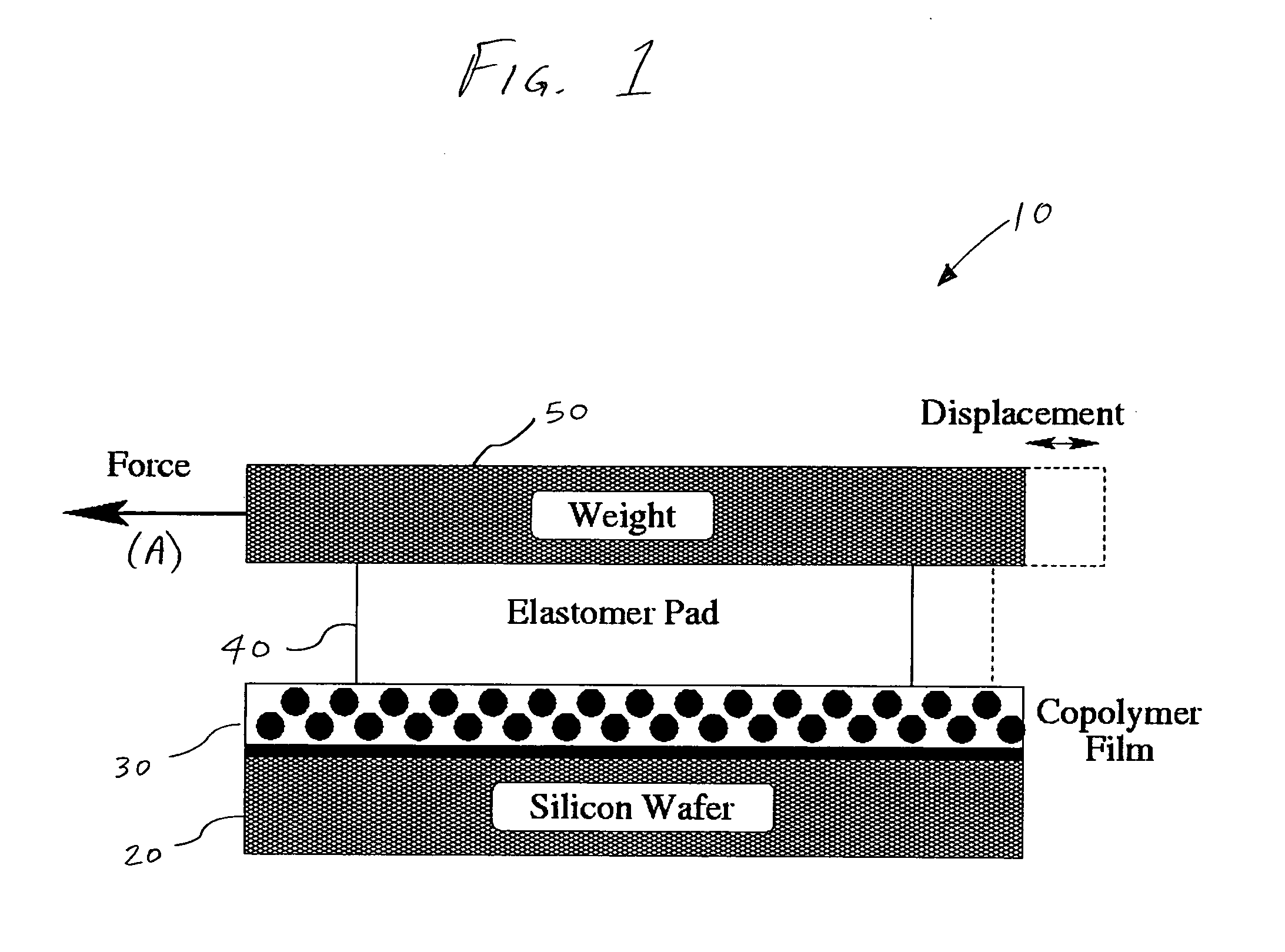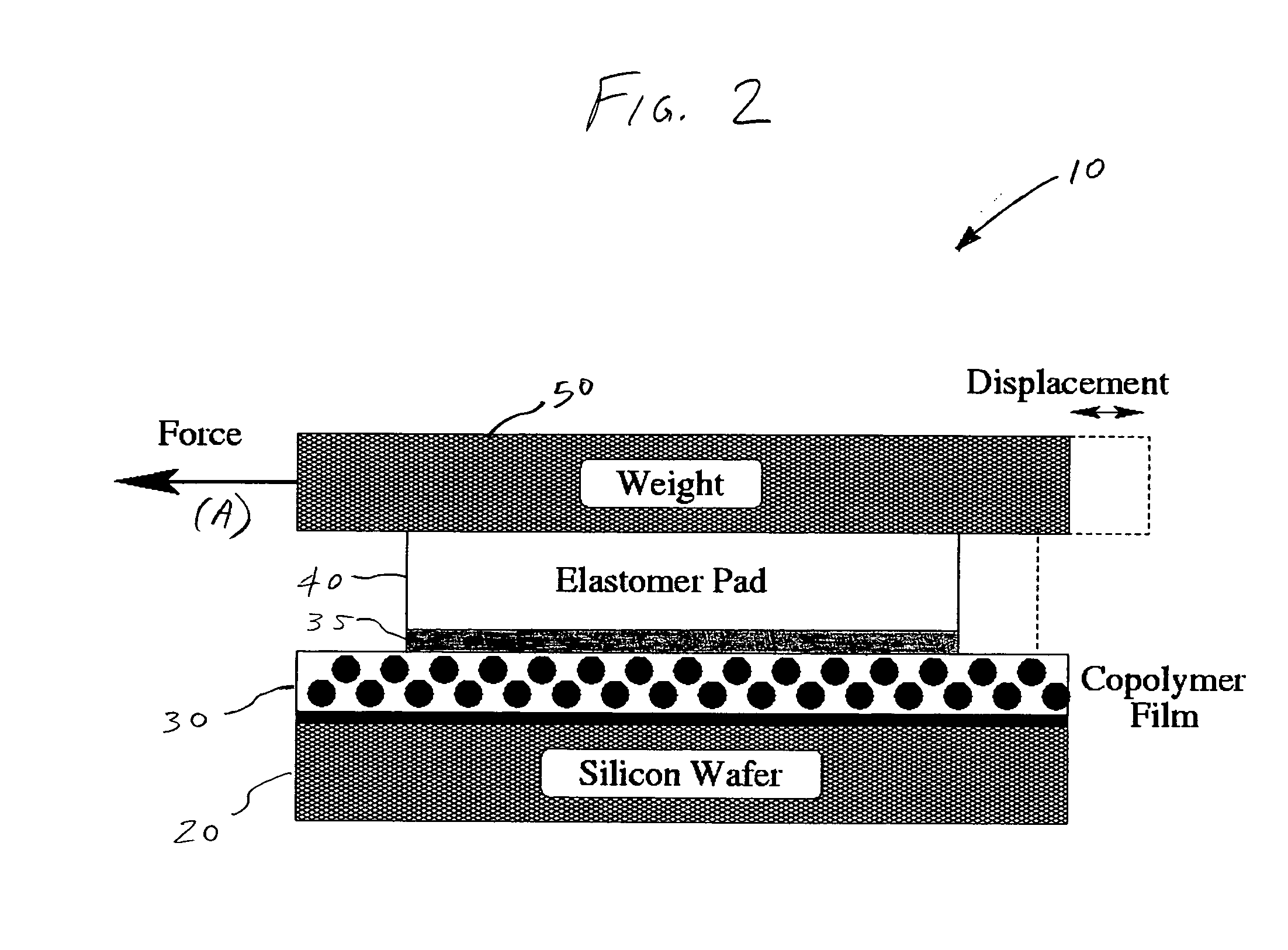Method and apparatus for providing shear-induced alignment of nanostructure in thin films
a technology of nanostructure and thin film, applied in photomechanical equipment, instruments, coatings, etc., can solve the problems of inability to accurately and consistently align nanostructures in thin films, lack of order, and thus addressability, and limit data storage density to well below the theoretical maximum of one bit per nanodomain
- Summary
- Abstract
- Description
- Claims
- Application Information
AI Technical Summary
Benefits of technology
Problems solved by technology
Method used
Image
Examples
example 1
[0030]FIGS. 4a-4b are tapping-mode atomic force microscopy (TM-AFM) images of a sheared PS-PEP 3-23 BCP bilayer film produced by the present invention, taken at two separate locations on a single cm2 sample. The BCP film was approximately 50 nm in thickness, which corresponds to the thickness of two layers of nanodomains. The substrate thickness was approximately 500 microns, and a PDMS pad having a thickness of approximately 1 mm and an area of approximately 1 cm2 was utilized. A shearing force of approximately 0.8 N was applied to the pad, and a weight of approximately 9.8 N was provided on the pad. The sample was heated to a temperature of approximately 100 degrees C., and the BCP layer was sheared for approximately 20 minutes. As can be seen in both images, TM-AFM imaging revealed an aligned hexagonal lattice over the full extent of the sheared region of the BCP layer, with one of the lattice directions coinciding with the shear direction. The inserts in FIGS. 4a-4b show Fourier...
example 2
[0032] As mentioned earlier, the thickness of the BCP layer significantly affects the quality of alignment produced by the present invention. This can be appreciated with reference to FIG. 5, which is a TM-AFM image showing a disordered BCP bilayer film resulting from shear stress applied to slightly thicker and thinner films, as well as monolayer films. The BCP film was approximately 49 nm in thickness. The substrate thickness was approximately 500 microns, and a PDMS pad having a thickness of approximately 1 mm and an area of approximately 1 cm2 was utilized. A shearing force of approximately 0.8 N was applied to the pad, and a weight of approximately 9.8 N was provided on the pad. The sample was heated to a temperature of approximately 100 degrees C., and the BCP layer was sheared for approximately 20 minutes.
[0033] The image of FIG. 5 shows a completely disordered lattice, with no translational or orientational order. The density of topological defects is also very high, with a...
example 3
[0035]FIG. 6 is a scanning electron microscope (SEM) image of an aligned BCP thin film of polyisoprene (PI) spheres in a polystyrene (PS) matrix taken with staining of the film using osmium tetroxide. It has been found that good alignment can be achieved with a PS-PI 68-12 BCP layer having a thickness of 110 nm. At room temperature, PI is a rubber and PS is a glass. The PS-PI 68-12 layer is heated to 180° C., wherein the PI and PS materials are fluids. The PS-PI 68-12 BCP layer is formed on the substrate in similar fashion as the PS-PEP 3-23 BCP layer discussed earlier, and an elastomer pad applied to the PS-PI 68-12 BCP layer. The substrate thickness was approximately 400 microns, and a PDMS pad having a thickness of approximately 1 mm and an area of approximately 1 cm2 was utilized. A shearing force of approximately 0.07 N was applied to the pad, and a weight of approximately 9.8 N was provided on the pad. The sample was heated to a temperature of approximately 180 degrees C., and...
PUM
| Property | Measurement | Unit |
|---|---|---|
| thickness | aaaaa | aaaaa |
| thicknesses | aaaaa | aaaaa |
| area | aaaaa | aaaaa |
Abstract
Description
Claims
Application Information
 Login to View More
Login to View More - R&D
- Intellectual Property
- Life Sciences
- Materials
- Tech Scout
- Unparalleled Data Quality
- Higher Quality Content
- 60% Fewer Hallucinations
Browse by: Latest US Patents, China's latest patents, Technical Efficacy Thesaurus, Application Domain, Technology Topic, Popular Technical Reports.
© 2025 PatSnap. All rights reserved.Legal|Privacy policy|Modern Slavery Act Transparency Statement|Sitemap|About US| Contact US: help@patsnap.com



